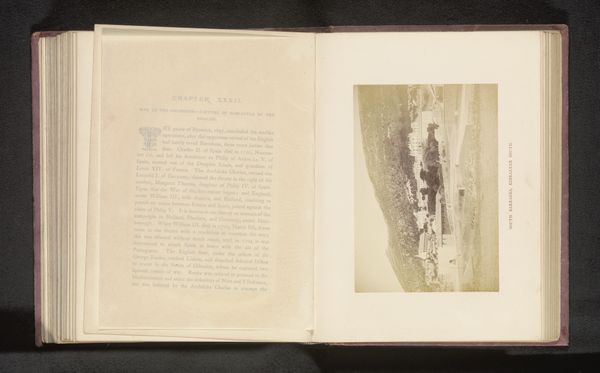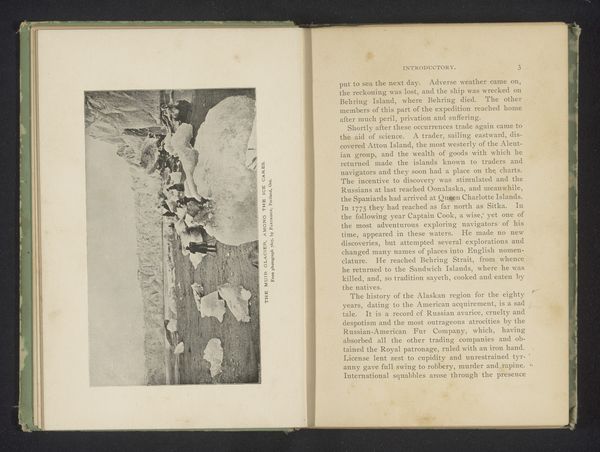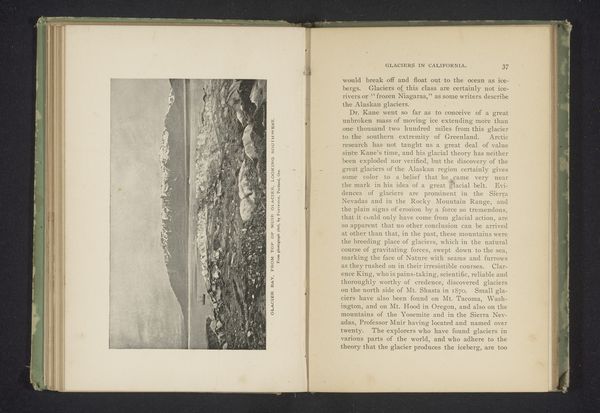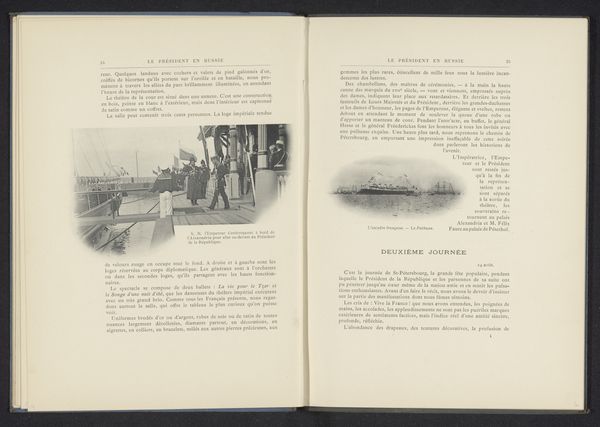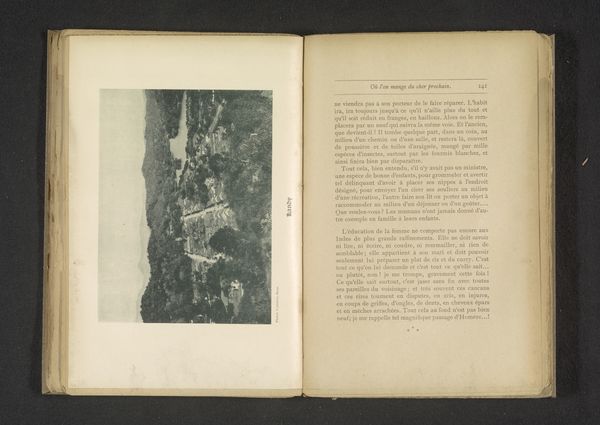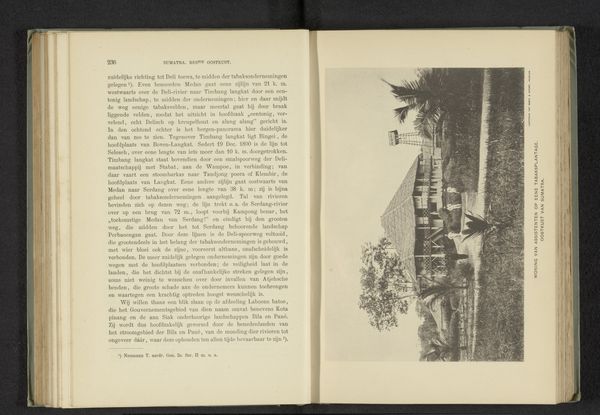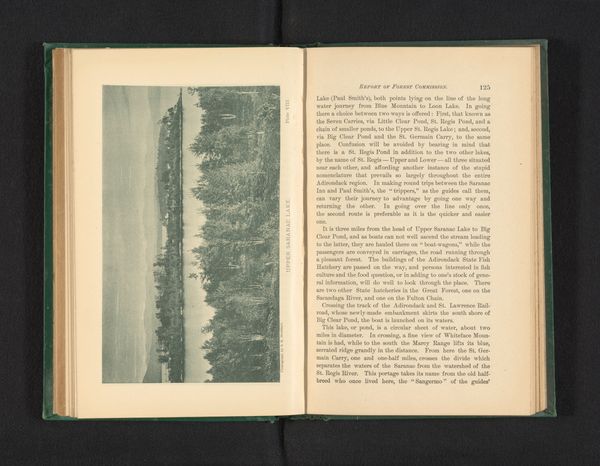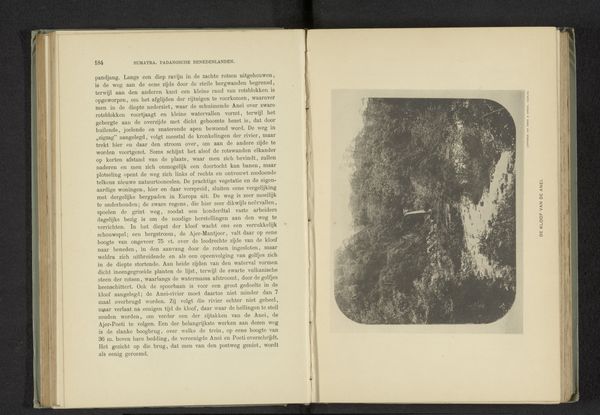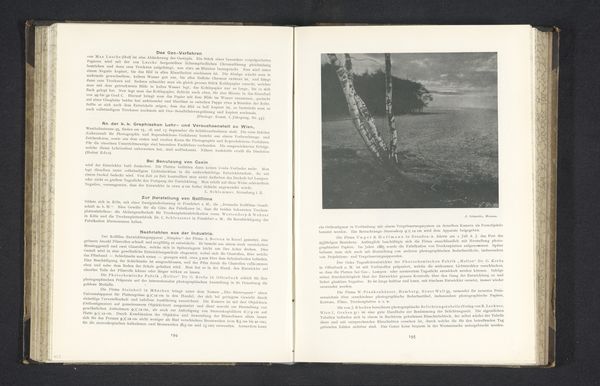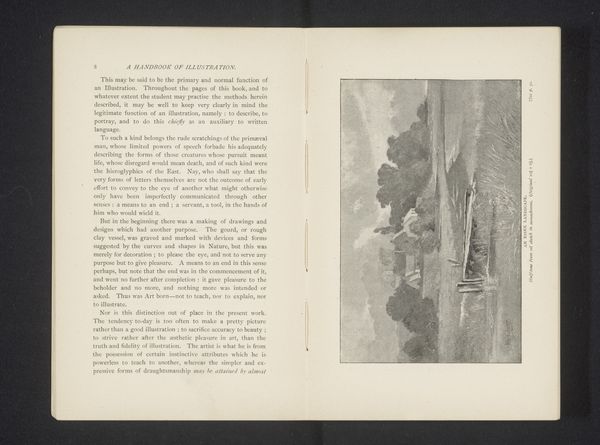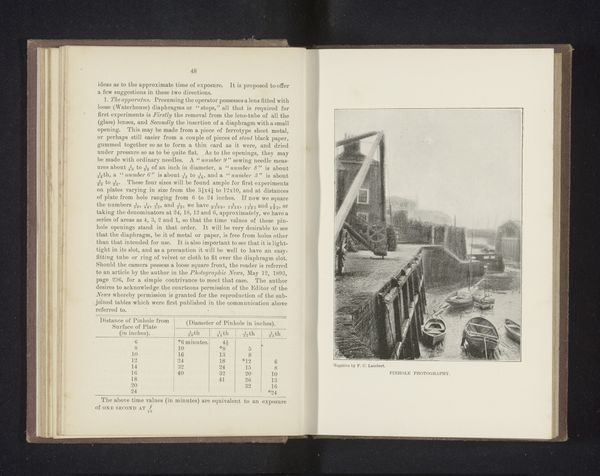
Reproductie van een schilderij van herders met een schapenkudde in de Provence door Eugène Burnand before 1901
0:00
0:00
print, engraving
# print
#
landscape
#
genre-painting
#
engraving
#
realism
Dimensions: height 208 mm, width 239 mm
Copyright: Rijks Museum: Open Domain
Curator: Before us is a reproduction of Eugène Burnand’s depiction of shepherds with a flock in Provence, crafted before 1901. Its form is realized through print and engraving. Editor: At first glance, the overwhelming sense is one of pastoral tranquility, a gentle, almost ethereal rendering of figures moving across a seemingly vast plane. Curator: Notice how Burnand meticulously employs a monochromatic palette. The tonal range achieved through the engraving creates a play of light and shadow, guiding the eye. It’s not just representational; the very texture evokes the landscape. The repetitive line work mimics the undulation and flow inherent in the shepherd’s movements. Editor: Precisely! These repeating lines speak to the age-old symbolism inherent to shepherd and flock relationships – care, guidance, perhaps even subtle control, given the shepherd's stance atop the horse overlooking his many animals below. Curator: The composition invites further analysis. Observe how the strong horizon line cuts the frame, creating distinct zones. The sky—or lack thereof, given how the pale tones mimic land–acts as a structural foil, placing focus upon earthbound labor. The lines on their skin, their outfits – all elements working together toward structural cohesion! Editor: True, there's formal restraint, but isn’t this restraint itself a symbolic element? The shepherds, historically linked to humble virtue, the quiet dedication and constant devotion for the care of their animals! Curator: An interesting point about this genre painting within the realm of realist depiction… Perhaps such focus on technical structure is to mirror labor’s own inherent patterns. We feel that repetition too – in an attempt to show respect by reflecting life accurately through these techniques. Editor: Yes, this image allows viewers across time periods to recognize visual storytelling from previous cultural frameworks… a recognition of symbols in plain sight to encourage self-reflection. I suppose, it is through repeated experience which gives rise both structure in practice - be it art and culture Curator: Quite a fruitful assessment overall, isn’t it? Highlighting how form serves representational meaning. Editor: Yes, structure and symbology interweave constantly like light with lines in our vision as humans.
Comments
No comments
Be the first to comment and join the conversation on the ultimate creative platform.

